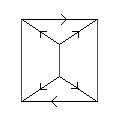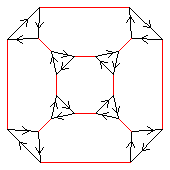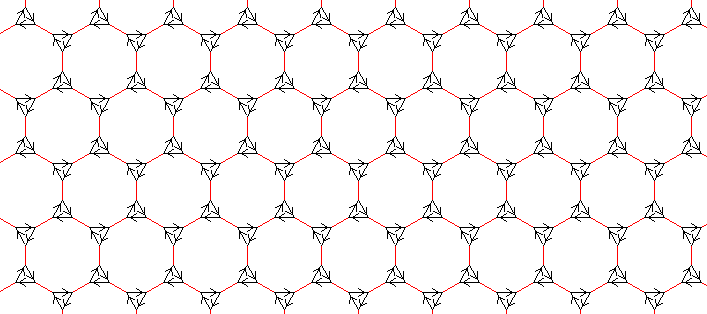



Consider the presentation
for n = 2, 3, 4, 5. The groups generated are S3, A4, S4, A5 respectively. These are illustrated below.
| n | Presentation | Group | Cayley graph |
|---|---|---|---|
| 2 | < k, r | k3, r2, (kr)2 > | S3 |

|
| 3 | < k, r | k3, r2, (kr)3 > | A4 |

|
| 4 | < k, r | k3, r2, (kr)4 > | S4 |

|
| 5 | < k, r | k3, r2, (kr)5 > | A5 |

|
Unfortunately the series S3,A4,S4,A5 does not extend at each end, giving A3,S3,A4,S4,A5,S5,A6, etc., as we might have hoped.
The preceding presentation for n=1 < k, r | k3, r2, (kr)1 > generates, not A3, but the one-element group.
The subsequent presentation for n=6
< k, r | k3, r2, (kr)6 >
generates, not S6, but an infinite group, containing ℤ×ℤ, part of whose Cayley graph is
 .
.
For n>6, < k, r | k3, r2, (kr)7 > etc. give infinite groups, whose Cayley diagrams can be drawn nicely in the hyperbolic plane, and which have free groups as subgroups.
For n=ω, < k, r | k3, r2 > gives PSL(2,ℤ).
More miscellaneous short pages on finite groups
More pages on groups
Copyright N.S.Wedd 2008